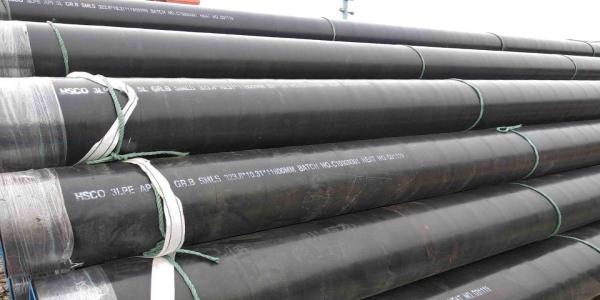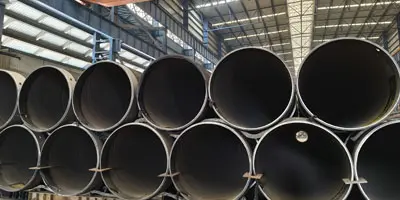The reasonable selection of casing and tubing sizes should be determined based on the energy of the oil reservoir and the requirements of the oil production engineering. First determine the reasonable tubing size, and then select the smallest possible production casing size. This sequence can avoid the traditional problems of oil production engineering being limited by the size of the production casing, the inability to use suitable process technology for many oils, and the difficulty of implementing some production-increasing measures. The selection of production casing size requires consideration of factors in the entire oil well production process, including oil well type, oil production methods, production stimulation measures, crude oil characteristics, and oil production engineering requirements.

1. Under oil production mode
Conventional oil production well oil and casing size = max (t1, t2, t3, t4}t, the most common material standard for oil pipe and casing is API 5CT.
t1:-- Oil and casing dimensions obtained from the production optimization target in the self-injection stage
t2--The oil and casing dimensions obtained under the selected artificial lifting method;
T3--the size of oil and casing that meets the requirements of production stimulation measures;
t4--Oil and casing sizes required by other special processes.
2. Suggestions on casing and tubing size
The selection of casing and tubing size requires comprehensive consideration from the perspective of the entire oil field production system. This is because after the oil field is put into development, factors such as production increase measures, strength requirements, and supporting oil production technology will affect the size of casing and tubing. Here are some tips on how to correctly choose the right casing and tubing size.
Node analysis method: This is one of the conventional analysis methods, aiming to determine the optimal tubing size based on maximizing the productivity of the oil well or the longest production time during the self-blowing period. Through node analysis, the diameter of casing and tubing can be reasonably matched to maximize the productivity and efficiency of the oil well.
Strength requirements: When selecting the size of tubing and casing, it is necessary to consider the parameters of the oil well, including requirements for resistance to extrusion, resistance to internal pressure, and tensile strength. When designing the oil pipe string, factors such as piston effect, spiral bending effect, expansion effect, and temperature effect also need to be considered to ensure that the strength of the oil pipe meets engineering needs.
Process supporting technology: When selecting the size of tubing and casing, it is also necessary to consider the application of process supporting technology, including the specifications and supporting performance of downhole equipment. The outer diameter of some downhole tools and artificial lifting equipment is usually larger, so the inner diameter of the selected casing should be suitable for the smooth running of these equipment and tools into the well, while taking into account the differences between downhole packers, slips, etc. and the size of the casing. Matching.
Well structure: Consider well inclination, curvature, dogleg and other factors to ensure that the tubing and casing can be run smoothly into the well and meet the design requirements.
Accident handling: When selecting the size of tubing and casing, it is necessary to consider the usage conditions of conventional downhole accident handling tools to avoid increasing the difficulty and cost of repair and construction when an accident occurs.
Later utilization: From the perspective of exploration and development adjustment, considering that in the later stage of oil field production, it may be necessary to deepen old wells or perform sidetracking operations, etc., therefore, the possibility of later utilization of oil wells should be considered in the completion design.
3. Casing and tubing diameter selection
Choose casing and tubing diameter based on capacity and pressure loss:
The node analysis method is a conventional analysis method. The goal is to determine the maximum production based on the oil well production or the production time of the self-blowing period, and then match the diameter of the oil pipe and casing based on the pressure loss of different pipe diameters.
Select casing and tubing diameter according to strength requirements:
When designing a tubing string, it is necessary to calculate the compression resistance, internal pressure resistance, and tensile strength of the tubing. It is also necessary to consider the piston effect, spiral bending effect, expansion effect, and temperature effect when the tubing string is equipped with a packer. length, and verification of axial stress and bending stress at dangerous points.
Select oil pipe diameter from the supporting technology of oil production process:
Consider the matching performance of downhole tools and ensure that the size of the tubing matches the matching performance of these tools to ensure the flexible operation of the downhole tools.
Casing pipe selection specifications
1. Pipe size: When selecting casing pipe, the size of the pipeline should be considered first. The inner diameter of the casing pipe must be larger than the outer diameter of the pipeline. At the same time, the wall thickness and bending radius of the casing pipe should also be considered to ensure the protective effect of the casing pipe.
2. Environmental factors: When selecting casing pipe, the environmental factors such as temperature, humidity, and corrosiveness of the pipeline should also be considered. For high temperature environments, casing pipe materials that can withstand high temperatures should be selected; for humid environments, casing pipe materials that are resistant to moisture should be selected; for corrosive environments, corresponding anti-corrosion casing pipe materials should be selected.
3. Thermal expansion coefficient: When selecting casing pipe, the material and thermal expansion coefficient of the pipeline should also be considered. If the thermal expansion coefficient of the pipe material is different from that of the sleeve, it will cause stress in the sleeve when the temperature changes, affecting the protective effect of the sleeve. Therefore, when selecting the sleeve, the thermal expansion coefficient of the pipe material should also be considered.
4. Installation method: Different sleeves have different installation methods, such as fixed sleeves, telescopic sleeves, hoses, etc. Choose the appropriate sleeve installation method according to the specific application scenario.
5. Other factors: When selecting the sleeve, pay special attention to other factors such as the fire resistance, wear resistance, and waterproof performance of the sleeve.
Casing pipe selection method
1. Understand the specific parameters of the pipeline, such as pipeline material, pipeline size, pipeline length, etc.;
2. Understand the environment and use conditions of the pipeline;
3. Understand the material of the sleeve, such as PVC material, nylon material, etc.;
4. Select the appropriate sleeve material and model according to the specific situation;
5. Install and adjust according to the size, installation method and other requirements of the sleeve.
In actual situations, it is sometimes necessary to appropriately adjust the tubing size according to the actual needs of downhole tools, because there are also certain differences between casing and tubing. Some tools are limited by their own structures and cannot form a series of products matching various tubings.






 English
English Español
Español بالعربية
بالعربية











 Phone :
Phone :  Whatsapp :
Whatsapp :  Email :
Email : 


